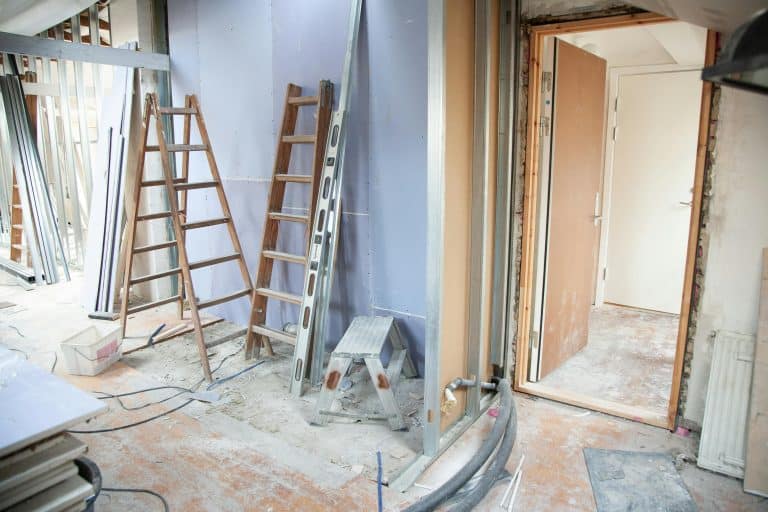Got renovation dreams but a wallet that’s saying “maybe not”? You’re not alone. Whether it’s a sleek new kitchen or turning your garage into a gym, dream upgrades can cost more than we expect. But here’s the good news—you don’t have to hit reset on your finances to make them happen. There are smart and realistic ways to fund your dream projects without depleting your savings.
We’re breaking down easy, flexible tips to help you get started—because building a better space shouldn’t mean starting from scratch.
1. Set a Realistic Budget Before You Build
Before you dive into demo day, start with a clear plan. Create a budget based on what you truly need, not just what looks good on social media. Think through labor costs, materials, permits, and unexpected expenses (because there’s always at least one).
Setting a clear number from the beginning helps you stay focused and keeps surprises from turning into major stress. Use simple budgeting tools or even a spreadsheet to map it out. The more detail, the better. Budget first, dream second—it saves time and money in the long run.
2. Use Home Equity Loans for Larger Projects
Big upgrades, such as kitchen renovations or room additions, can be pricey, and paying out of pocket isn’t always realistic. If you’ve owned your place for a while, chances are you’ve built up value that can help cover the cost. Home equity loans let you borrow a lump sum based on the value you’ve already built up. You’ll receive a fixed interest rate and a set repayment term, resulting in predictable monthly payments, making your dream home upgrades a convenient possibility.
3. Consider a Home Equity Line of Credit (HELOC)
If your project is ongoing or you’re working in phases, a HELOC might be the best option. It provides you with a credit line that you can borrow from when needed. You don’t get all the money at once, which makes it great for flexibility. It also means you only pay interest on what you actually use. This is helpful for people managing costs over several months or who are not entirely sure how much their project will require. Just make sure you understand the repayment terms and draw period rules.
4. Apply for Government or Energy Efficiency Rebates
If your upgrade plans include energy-saving appliances, solar panels, or new windows, be sure to check for available rebates. Local, state, and federal programs offer cash incentives or tax credits that help cut your total spend. Some utility companies even offer rebates for simple upgrades, such as smart thermostats.

These savings can add up quickly and reduce the amount you need to borrow or spend upfront. Check with your state’s energy office or local city programs before buying materials or signing contracts—you might qualify for more than you think.
5. Use a 0% APR Credit Card for Smaller Upgrades
For projects under a few thousand dollars—such as installing shelves, painting, or buying furniture—a credit card with a 0% APR offer can be particularly helpful. These cards usually offer interest-free periods for 12–18 months. As long as you can pay it off before the intro period ends, it’s essentially free financing. Just be sure to track your payments and avoid late fees.
This works best for short-term expenses that you’re confident you can pay off quickly, rather than major renovations that might stretch your budget too thin.
6. Finance Through the Contractor
Some contractors offer financing through their company or a third-party lender. This can be a convenient option, especially if you want to roll everything—materials, labor, and financing—into one contract. But don’t sign just because it sounds easy. Take time to compare the interest rate, repayment terms, and fees with what you’d get from your bank or credit union. Sometimes, contractor financing has higher rates or less flexible terms.
7. Tap Into a Cash-Out Refinance
A cash-out refinance replaces your current mortgage with a new, larger loan—and you get the difference in cash. It’s a good option if current interest rates are lower than what you’re already paying. You can use that cash to fund major improvement projects, such as adding a second floor or updating an outdated kitchen.
The upside? You’re still making one monthly mortgage payment. Be sure to account for closing costs and any updated loan terms. If you plan to stay put for a while, this could be a smart long-term strategy.
8. Look Into Personal Loans or Renovation Loans
Not every upgrade needs to involve tapping into your home’s value. A personal loan can be a quick and straightforward option—especially for medium-sized projects, such as new flooring or fencing. These loans usually come with fixed rates and set repayment periods, which helps with budgeting. Another option is a renovation loan, which some lenders offer based on your home’s projected future value. These are great for major upgrades that will significantly increase market worth.
9. Save Strategically with a Sinking Fund
If your project can wait, consider saving over time with a sinking fund. This simply means setting aside a fixed amount each month toward a specific goal, such as a bathroom upgrade or new appliances. Use a high-yield savings account to earn a little extra on your contributions. It’s a no-debt solution that gives you full control over spending. While it may take longer, it also avoids interest charges and preserves your credit score. For non-urgent projects, it’s one of the most stress-free ways to fund your improvements.
10. Mix and Match Financing Based on Scope
Not every upgrade has to be paid for the same way. You can use an equity loan for big-ticket items, such as a roof replacement, a 0% APR card for smaller purchases like light fixtures, and a rebate for energy-efficient upgrades. Mixing financing methods lets you control how much you borrow and when. It also helps you reduce interest charges by matching the right tool to the right job. Be sure to track your spending and repayments to stay organized.
Creating the space you’ve always wanted doesn’t mean starting from zero. With smart planning, the right mix of financing tools, and a little patience, you can turn your vision into reality—without putting your finances in a tough spot. Your dream upgrades are possible—and you don’t have to start over to make them happen.













